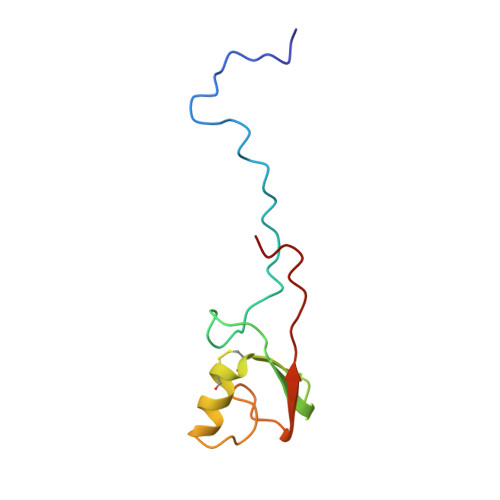E2-c-Cbl recognition is necessary but not sufficient for ubiquitination activity
Huang, A., de Jong, R.N., Wienk, H., Winkler, G.S., Timmers, H.T.M., Boelens, R.(2009) J Mol Biol 385: 507-519
- PubMed: 18996392
- DOI: https://doi.org/10.1016/j.jmb.2008.10.044
- Primary Citation of Related Structures:
2K4D - PubMed Abstract:
The E2 ubiquitin-conjugating enzymes UbcH7 and UbcH5B both show specific binding to the RING (really interesting new gene) domain of the E3 ubiquitin-protein ligase c-Cbl, but UbcH7 hardly supports ubiquitination of c-Cbl and substrate in a reconstituted system. Here, we found that neither structural changes nor subtle differences in the E2-E3 interaction surface are possible explanations for the functional specificity of UbcH5B and UbcH7 in their interaction with c-Cbl. The quick transfer of ubiquitin from the UbcH5B-Ub thioester to c-Cbl or other ubiquitin acceptors suggests that UbcH5B might functionally be a relatively pliable E2 enzyme. In contrast, the UbcH7-Ub thioester is too stable to transfer ubiquitin under our assay conditions, indicating that UbcH7 might be a more specific E2 enzyme. Our results imply that the interaction specificity between c-Cbl and E2 is required but not sufficient for transfer of ubiquitin to potential targets.
Organizational Affiliation:
Department of NMR Spectroscopy, Bijvoet Center for Biomolecular Research, Utrecht University, Padualaan 8, 3584 CH, Utrecht, The Netherlands.















